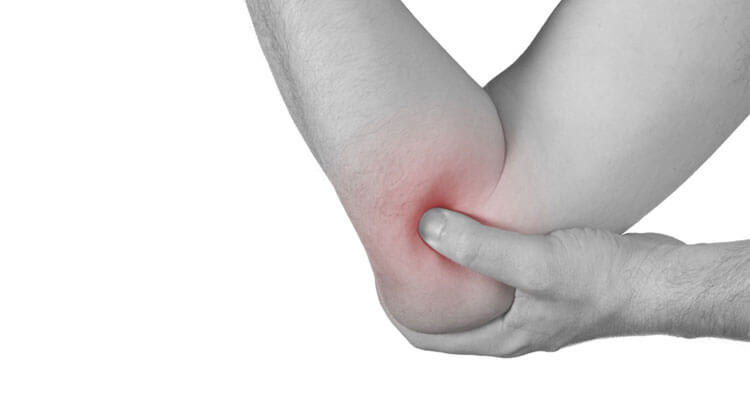Muscle Pain and Tendinopathy, Sports Injuries and Management
What Is Golfer’s Elbow?
Golfer’s Elbow The Lesser Known Sibling Of Tennis Elbow
Similar to tennis elbow, a condition which occurs on the lateral (outside) part of the elbow, golfer’s elbow is a soft tissue injury that is experienced on the medial (inside) side of the elbow. Just as tennis elbow doesn’t exclusively occur in tennis players, golfer’s elbow is not limited to only golfers. Basically any sport, recreational, or occupational activity requiring an individual to repeatedly use their wrists, grip, or clench their fingers may contribute to the development of medial elbow symptoms.
With repetition of these sort of actions irritation to the soft tissues that assist in the clenching of the wrist and fingers may occur. Muscles involved in these actions are attached to the bony bump on the inside of your elbow know as the medial epicondyle. These muscles attach through a common tendon, often referred to as the common flexor tendon. With medial elbow pain resulting from golfer’s elbow the site of pain is where this common flexor tendon attaches and slightly down the tendon around 1-2 cms from the medial epicondyle attachment point.
Golfer’s Elbow Symptoms
Pain associated with golfer’s elbow may come on more gradually, or may present suddenly. Similar to tennis elbow pain patients will typically report discomfort associated with gripping activities, with simple actions like shaking someone’s hand, opening a jam jar, or just turning a door knob can cause significant pain in both medial and lateral elbow tendon complaints.
Signs and Symptoms Of Golfer’s Elbow May Include:
As mentioned above the most common symptom is generally pain with gripping or twisting actions, some of the other signs and symptoms include:
- Tenderness felt on palpation directly over the bony bump (epicondyle) on the inside of your elbow, with the tender area also frequently extending lower down the forearm along the medial part of the upper forearm.
- Patients may complain that their elbow may feel stiff, however on assessment I find the majority of the time basic elbow movements including straightening, bending and actively twisting the arm will all be pain-free unless the issues is acute and particularly inflamed.
- Commonly patients will find that there may be pain when their forearm muscles are stretched, with medial elbow tendon pain this is a stretch whereby the fingertips are stretched down towards the floor with the palm starting in the facing upwards position.
- Less commonly some patients may experience tenderness and neck stiffness, as well as have signs of nerve irritation (including numbness, or tingling radiating into one, or more of the fingers).
Causes Of Medial Elbow Tendinopathy
Classic golfer’s elbow these days is thought to be associated with degenerative changes in the soft tissues located at the medial epicondyle. When singular, or repetitive force is applied to the area beyond what the tissue can tolerate, actions involving forceful wrist and finger motions, golfer’s elbow may develop.
Improper lifting, throwing, or hitting techniques in sport are often implicated and commonly training errors such as poor conditioning and the progression of activity load changes too quickly.
As previously mentioned golfer’s elbow is not confined to one sport, any activity requiring repeated gripping, with, or without bending and straightening of the elbow can cause the condition. This can include common activities like hammering, painting, raking, chopping wood, cooking especially if there is a dramatic increase in frequency or load with these activities in a short period of time not allowing time for tissues to adapt…
Who Is At Risk Of Developing Medial Elbow Tendinopathy?
You may be at higher risk of developing golfer’s elbow if you are:
- Aged > 40 years old.
- Consistently perform repetitive activities involving gripping for at least a couple of hours a day, day on day, week on week.
- A smoker
- Obese
Disclaimer: Sydney Physio Clinic provides this information as an educational service and is not intended to serve as medical advice. Anyone seeking specific advice or assistance on What is Golfer’s Elbow? should consult his or her general practitioner, physiotherapist or otherwise appropriately skilled practitioner.


